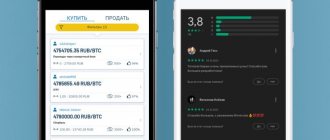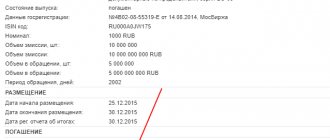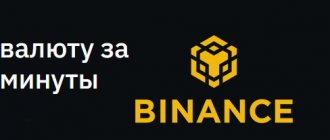Monero cryptocurrency
Monero cryptocurrency (XMR) is the most famous open-source anonymous coin. Unlike Bitcoin and other similar cryptocurrencies, whose blockchain allows you to see the sender and recipient addresses and even the transaction amount, Monero is truly anonymous, secure and completely untraceable, which is why it is often called the “#1 anonymous cryptocurrency.”
- What is the Monero cryptocurrency? History of creation
- Team
- Monero technology Ring signatures
- Ring Transactions (RingCT)
- Stealth addresses
- Monero Fungibility
- Mining Monero with CPU
Monero XMR - what kind of coin is it
Monero is the crypto market's answer to Bitcoin's lack of privacy. For a long time, people believed that Bitcoin transactions were anonymous. Nowadays, most people understand that this is not the case. In fact, there are many tools and services that can be used to expose the person behind specific Bitcoin transactions.
Monero takes a different approach to the market. This coin makes privacy its main component. This strategy continues to make Monero the best coin for anyone looking to maintain their privacy in the sector. In fact, Monero's anonymization protocols are so effective that people often use them to hide their ownership of other cryptocurrencies.
History of Monero
The history of Monero begins in 2012. At that time, the concept of privacy coins was just beginning to enter the market. People began to realize that “in the digital economy, privacy equals freedom.” Thus, Monero's journey begins with another project known as Bytecoin.
Bytecoin was revolutionary for several reasons. First of all, it was the first digital currency written using CryptoNote technology. CryptoNote combined multiple keys into a single transaction to make it difficult to determine who sent what where. At the time, the idea of grouping public keys was unheard of. Today, CryptoNote technology is the basis for most privacy-based cryptocurrencies on the market.
Although the Bytecoin concept was a great success, there were other aspects of the coin's launch strategy that also did not work out. In particular, there were disagreements among the developers regarding the initial distribution of the coin. Bytecoin ended up minting 80% of its coins during launch. This decision split the Bytecoin camp and led to the creation of another privacy coin, Bitmonero.
In total, seven high-level blockchain developers participated in the Bitmonero project. Of these seven personalities, only two personalities are known. The main developer of the project is Riccardo Spagni (FluffyPony). The development team also included longtime cryptocurrency enthusiast David Latapie. Shortly after the launch of the new platform, the developers decided to remove the word “Bit” from the name and simply use “Monero” as the name of the project. It is noteworthy that Monero means “coin” in Esperando.
More on this topic: How to earn a ton of Ethereum easily and quickly!
Team
Monero Creator Ricardo Spagni
The initial composition of the team that made the hard fork of the Bytecoin coin, resulting in the emergence of BitMonero, remained unknown. It was decided to create a full-fledged team only in April 2014, when the coin was named Monero. In May of the same year, Ricardo Spagni joined the team, who is still the “face” of the cryptocurrency.
At the moment, the official team of developers includes:
- Riccardo Spagni (fluffypony) is the leader and public face of Monero Core. Has an education in computer science and logistics. In 2011, he became interested in Bitcoin and took an active part in the development of the ecosystem of this cryptocurrency;
- Francisco Cabañas (articmine) is a Canadian developer. Has a degree in physics. Actively studying and investing in cryptocurrencies since 2011. Interested in the economic, social and legal side of cryptocurrencies;
- luigi1111 is an American developer, Monero system administrator. Actively interested in cryptocurrencies since 2013. His other interests include cryptography, probability theory, and English grammar.
Monero Core also includes other developers, details of which are not publicly available:
- othe;
- smooth;
- binaryFate;
- NoodleDoodle.
Technology and Application
Monero is an open-source, permissionless blockchain. The platform is able to remain private due to its ability to constantly update its technology. Interestingly, the Monero software is updated every six months. This way, developers can implement cryptographic advances. Here are some of the technologies that make Monero so great:
- Ring signatures
Ring signatures are a revolutionary advancement in cryptographic anonymity. This protocol combines the sender's digital signature with the signatures of other users. This system adds 10 signatures to each group of transactions. All signatures are then mixed together before they are officially entered into the blockchain.
Interestingly, the concept of ring signatures continues to evolve. In the past, developers have experimented with changing the number of signatures involved in this mixing process. There was even a short period of time where users could determine how many signatures to mix on a transactional basis.
- Hidden addresses
Another core technology behind Monero is hidden addresses. This protocol publishes a single address that automatically creates multiple one-time accounts for each transaction. The user's wallet then references a password, known as a view key, to scan the block chain to identify any transactions relevant to its existence.
- RingCT
In 2022, the Monero development team introduced another revolutionary technology called RingCT (Ring Confidential Transactions). This encoding hides the exact number of XMR users exchanged in transactions before they become viewable on the blockchain. To do this, the protocol introduces multiple inputs and outputs into a transaction. Combined with hidden addresses and ring signatures, these three technologies make Monero virtually impossible to track.
- Dynamic scalability
Another huge advantage of Monero in the market is its unlimited scalability. Scalability is the ability of a currency to serve more users in the future. In the past, Bitcoin has experienced scalability issues that caused the network to lag and fees to skyrocket. Bitcoin could not meet the scalability requirements at that time for many reasons. First of all, it can only process transaction blocks up to 1 MB in size.
Conversely, Monero does not have a preset block size. Miners can determine what block size of transactions they want to approve. However, recently the developers introduced a block reward system. The penalty takes into account the average size of the last 100 blocks. If the next block is larger than this amount, the penalty reduces the mining reward for that block. This strategy is designed to prevent spam from reaching blockchain nodes.
- CryptoNight
More on this topic: Where is it safe to store Bitcoin? Types of cryptocurrency wallets
CryptoNite is fundamentally changing the way miners participate in the market. Unlike Bitcoin, ASICs (Application Application Integrated Circuits) are of little use. Notably, Monero can be mined profitably using both CPUs and GPUs. CryptoNight's consensus mechanism prevents centralization in the mining sector. Thus, Monero may become more decentralized than Bitcoin in the future.
- Multiple keys
Monero uses a keyboard shortcut to operate its network anonymously. Specifically, Monero represents a public view key, a private view key, and a public and private spending key. Private spending keys are used to create outgoing transactions. While private view keys allow users to verify the blockchain to ensure they received their funds. You will also need a public key to verify your signature and a hidden public key.
Monero rate
The Monero cryptocurrency was first discussed in 2013, and in May 2014, XMR already appeared on cryptocurrency exchanges, gaining increasing popularity among the crypto community. The initial price of XMR was about $2.5, and the company's market capitalization was $1.382 million, which is quite good for the first months of the offering. Many altcoins have been trying to reach a similar level for years. For a long period, the Monero rate was stable, despite powerful hacker attacks that were carried out to destroy this cryptocurrency.
Monero began to gradually grow in July 2016, and by September 1, the XMR rate almost quadrupled and reached $8. This is due to the fact that two large darknet platforms began to use Monero as the main means of payment: Oasis and AlphaBay.
A year later, in September 2022, there was a sharp jump in the Monero rate to $144, after which it continued to rapidly gain momentum. This growth was driven by rumors that Monero would be added to the famous South Korean exchange Bithumb.
The peak value of XMR occurred in early January 2022, when it was $453. Market capitalization stood at $6.5 billion. Such unprecedented demand for this coin could have been caused by information that the US Internal Revenue Service (IRS) is using special tools to detect users who evade taxes and use cryptocurrencies for illegal purposes. Naturally, Monero is “loved” by many users who value anonymity and confidentiality.
Monero exchange rate dynamics
Then follow the next ups and downs. Attempts to return to previous levels were in vain, and the coin continued to fall steadily throughout the year. In December 2022, the Monero price dropped to $39, but at the beginning of 2022, it began to rise gradually again. The high for 2022 is $116 in June. Then, during the year, the price of the coin began to decline again, and as of September 2019, XMR remains around $58.
In general, we can say that XMR is characterized by sharp jumps in value. At the moment, Monero is in 13th place among the most popular cryptocurrencies according to the CoinMarketCap rating, and the market capitalization has already exceeded $1 billion.
Monero's position in the cryptocurrency ranking
Benefits of XMR coin
- XMR is platform and language independent, so it can be used on any system and support technology change as it happens.
- XMR supports Unicode. Unicode is an international encoding standard for use across languages and scripts that assigns each letter, number, or symbol a unique numeric value that is used across platforms and programs. This feature allows XMR to transmit any information written in any human language.
- Data stored and transmitted using XMR can be changed at any time without affecting the presentation of the data. Usually another markup language like HTML is used to represent the data, HTML receives the data from XMR and displays it in a GUI (Graphical User Interface), after updating the data in XMR it is reflected in HTML without any changes in the HTML GUI . .
- XMR allows verification using DTD and schema. This check ensures that the XMR document does not contain syntax errors.
- XMR makes it easier to exchange data between different systems because it is platform independent. XMR data does not require conversion when transferred between different systems.
Best Online Wallet to Store XMR
Online wallets are considered the least secure type of storage for any cryptocurrency. Firstly, they imply hot storage (however, most of the users’ assets are still stored in cold wallets of services). Secondly, access data is stored on the service’s servers - that is. they can be accessed by both attackers (for example, when hacking databases) and unscrupulous employees. However, using proven services allows you to reduce all risks to almost zero.
One of the most reliable online wallets is MyMonero, one of the services recommended by the official cryptocurrency website. It is located at mymonero.com. In general, this wallet is better called cross-platform - you can use it as mobile, desktop and web storage. We will consider the latter option.
To create a web wallet, you must scroll to the bottom of the wallet page and select “Quick access wallet online.” A new page will open where you can log in to the online wallet you created on MyMonero or create a new one (“Create new wallet”).
The service will ask you to write down a mnemonic phrase, with which you can restore access to your wallet at any time. The next step is to check the mnemonics. You need to choose the first 7 words in the correct order. If you do everything correctly, the wallet will be created successfully.
In the MyMonero wallet you will find the following sections:
- MyMonero Wallet. Basic information about the wallet is stored here - current balance, address, private key, Seed phrase, as well as transaction history;
- Send Monero. Section for sending coins - you can select the amount, recipient and priority (affects sending speed and commission);
- Receive Monero. Section for requesting translations. Available after installing the application;
- Contacts. Contact book, available after installing the application;
- Exchange. Built-in exchange service where you can convert XMR to BTC.
Also in the wallet you can select the battery life (after the “timer” expires, deauthorization occurs), select the currency, and so on.
Among other wallets with currency support, we can highlight Guarda Wallet and Atomic Wallet.
! article_read_also!
Disadvantages of XMR coin
- XMR syntax is verbose and redundant compared to other text-based data transfer formats such as JSON.
- The redundancy of XMR syntax leads to increased storage and transportation costs for large data volumes.
- An XMR document is less readable than other text-based data transfer formats such as JSON.
- XMR does not support arrays.
- XMR file sizes are usually very large due to its detailed nature, it depends entirely on who is writing it.
More on the topic: Chainlink (LINK) - review of the project and cryptocurrency
How to find out the Monero rate
If you want to find out the current rate of this cryptocurrency, the easiest way to do this is the website https://coinmarketcap.com. The data on this site is updated instantly, and here you can find useful information not only on cryptocurrencies, but also on all crypto exchanges and much more.
https://coinmarketcap.com
How and where to buy and sell Monero
Thanks to XMR's prominent role in the cryptocurrency market, they are easy to obtain. The first thing you need to do is register with a reputable exchange that trades XMR. Binance is the world's largest exchange and offers a wide selection of XMR trading pairs. You will need to verify your identity to log into the Binance exchange.
Once registration is complete, the next step is to fund your account. This task is easy to complete if you link your bank or debit card to the platform. Now you can start converting your fiat currency into cryptocurrency. Bitcoin is the recommended currency to trade because there are always BTC trading pairs for every cryptocurrency. Now that you have BTC, you can choose to exchange for XMR and in a few seconds you will receive your XMR in your wallet.
Profitable exchange of XMR on the HitBTC exchange
HitBTC has been operating since 2013.
This is a convenient platform for exchanging cryptocurrency. Monero is a cryptocurrency that is also traded here. And what’s interesting is that you can perform trading operations without registration, using the so-called demo mode. The HitBTC exchange operates with a commission of 0.1% on each transaction where Monero is used. But this resource can also exchange LTC, DOGE, QCN, NXT, FCN, BCN. In addition, there is an opportunity to work with such popular fiat currencies as EUR and USD.
To exchange cryptocurrency here in this way, you need to go through the following path:
- Register by clicking the “Register” button on the main page;
- Top up your balance by going to the “Account” section (do not forget that a commission is paid when transferring);
- Find XMR and next to it click on the “+” in the “Deposit” column. Then the address to which you need to transfer money will appear;
- Next, transfer funds to your trading account by clicking on “->” in the “Transfer” column;
- Go to the “Exchange” section and specify the trading pair in “Instruments”;
- Make an exchange by comparing the Monero XMR rate.
All that remains is to withdraw the money to your wallet. This can not be done immediately, but as needed. But it is not recommended to leave money on the exchange for a long time. This is not the safest storage option for any currencies.








